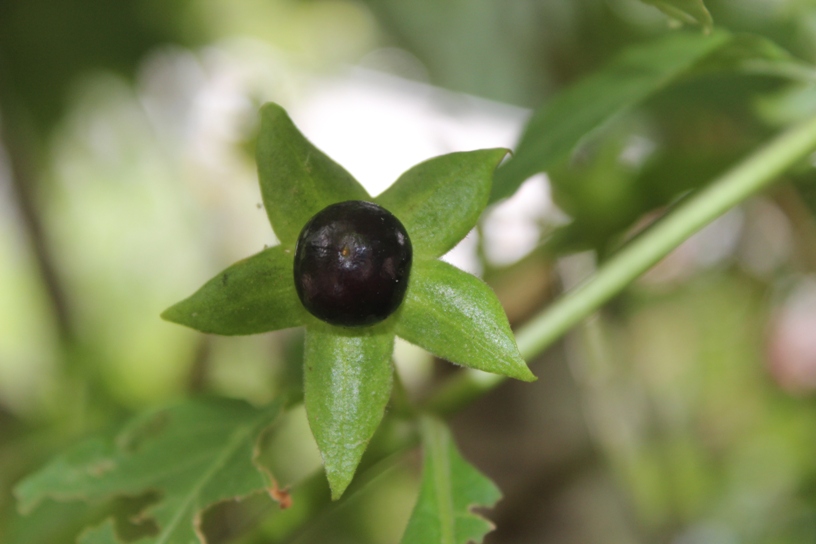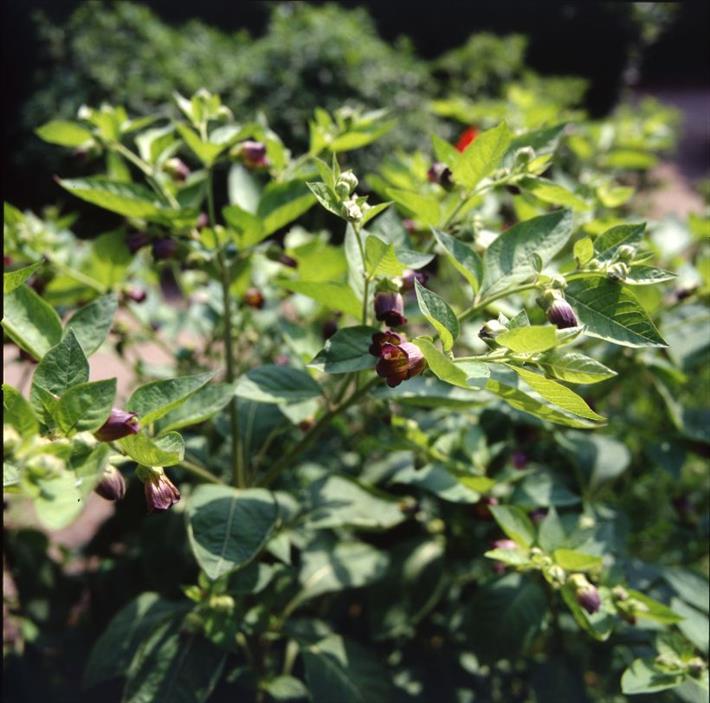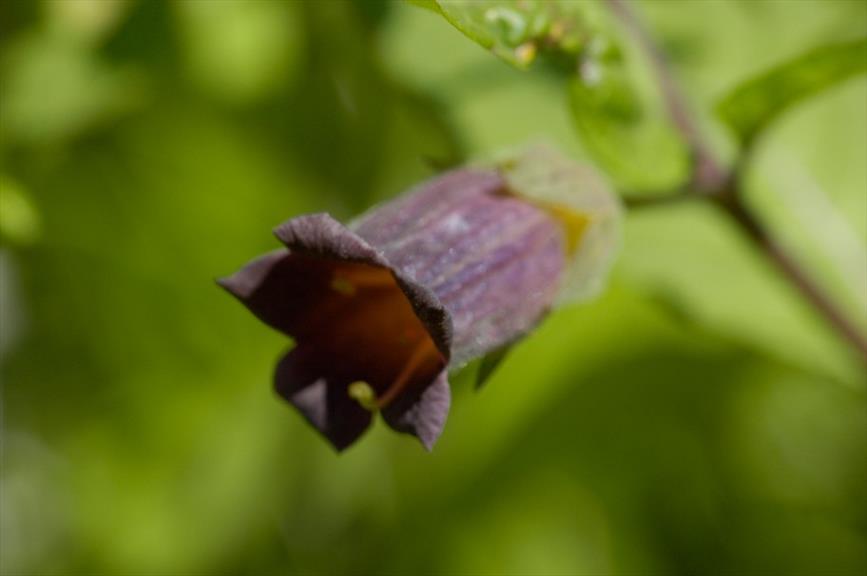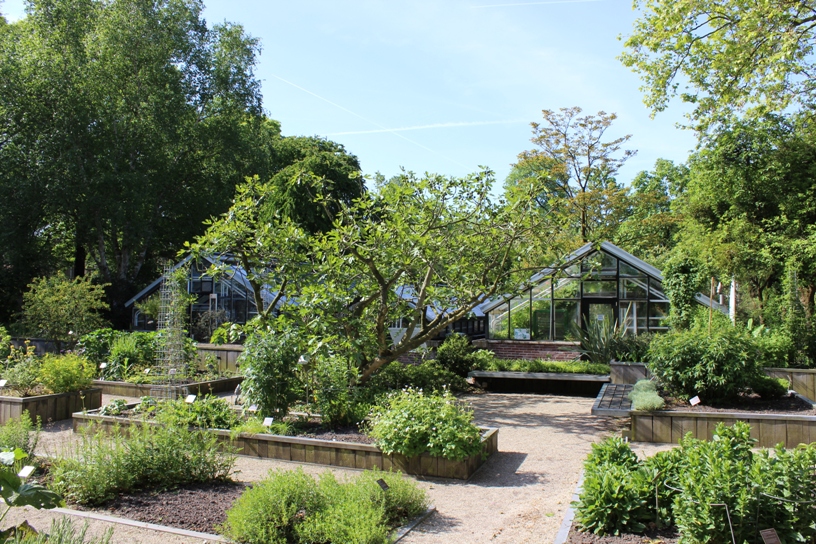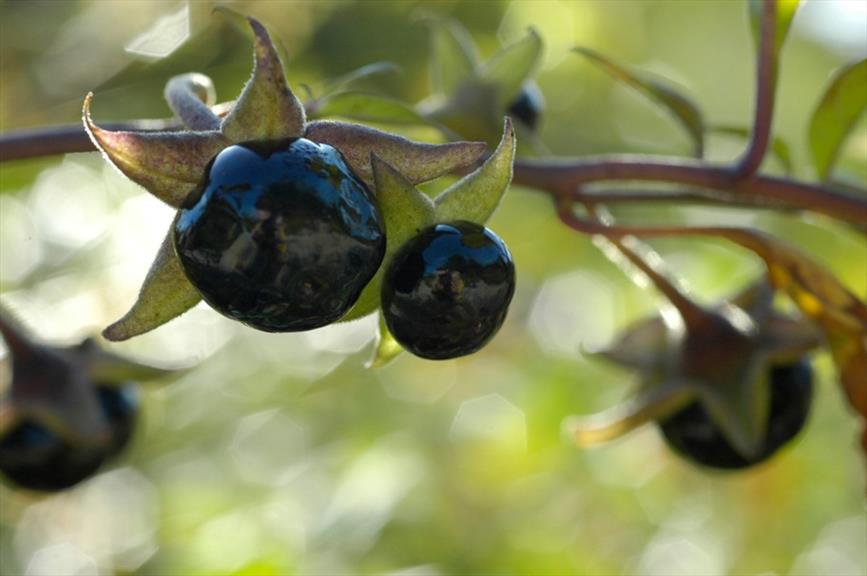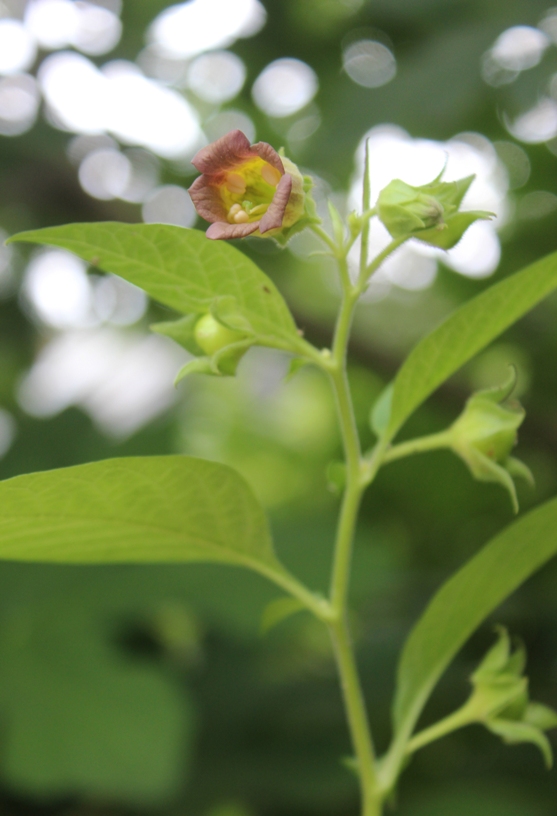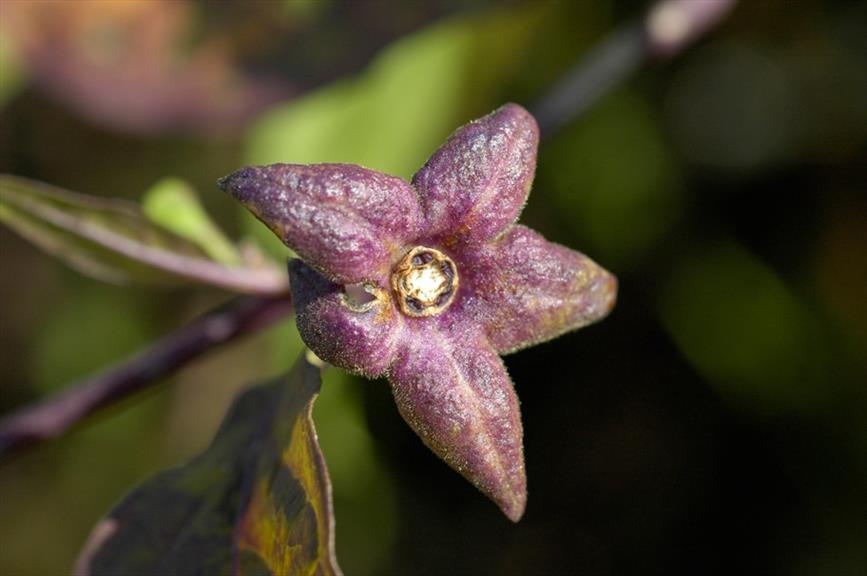Deadly Nightshade
Atropa bella-donna
Potato family (Solanaceae)
Apply for seductive eyes
Deadly nightshade was used in ancient times to poison wolves and enemies. Atropos was a Greek goddess, her name meaning ‘the inevitable’. The berries constitute a danger to children because they are attractive to the eye and sweet to the taste. Two to five berries are fatal for children; 10 – 20 will kill an adult. Birds however are not affected. The root is in general the most poisonous part, but even the consumption of the leaves is strongly discouraged. The plant contains atropine, a substance that affects the parasympathetic nervous system that controls the body’s involuntary actions such as sweating, breathing and regulating the heartbeat. Atropine from the deadly nightshade dilates the pupils and is used in a low dosage in eye drops by ophthalmologists to enable them to better examine the eye. This effect (dilated pupils) was considered by women in times gone by to be attractive, hence the name Belladonna. It is not recommended today since continual use leads to blindness. Surprisingly deadly nightshade has no affect on cattle or rabbits.
Read more.... »Themes
Crown jewel in the Hortus Botanicus Amsterdam and the De Kruidhof Botanic Garden.
The name 'belladonna' (beautiful lady) is derived from its effect of being able to dilate pupils, an attribute once considered to be most attractive in women. Deadly nightshade was used in ancient times to poison wolves and enemies.
The plant contains atropine, a substance that affects the parasympathetic nervous system that controls the body’s involuntary actions such as sweating, breathing and regulating the heartbeat. Atropine also dilates the pupils and is used in a low dosage in eye drops by ophthalmologists to enable them examine the eye more easily.
The berries constitute a danger to children because they are attractive to the eye and sweet to the taste. Two to five berries are fatal for children; 10 – 20 can kill an adult. Birds however are not affected. The root is in general the most poisonous part but even the consumption of the leaves is strongly discouraged.
Deadly nightshade was used in ancient times to poison wolves and enemies.
Details
| Description: | Herb, up to 1.50 m. |
|---|---|
| Distributions: | Southern, central and western europe, wesernt asia and north africa |
| Habitat: | Deciduous woods, on damp soils rich in humus, lime and nitrogen; occurring in sun gaps and clearings. |
| Year cycle: | Perennial (trees and shrubs included) |
| Hardiness: | -4 - 5 f (hardy - very cold winter) |
| Flowering period: | Juni - augustus |
| Flower color: | Brown, purple, yellow |
| Notes on flowers: | Corolla is brown-purple with a yellow inside. |
